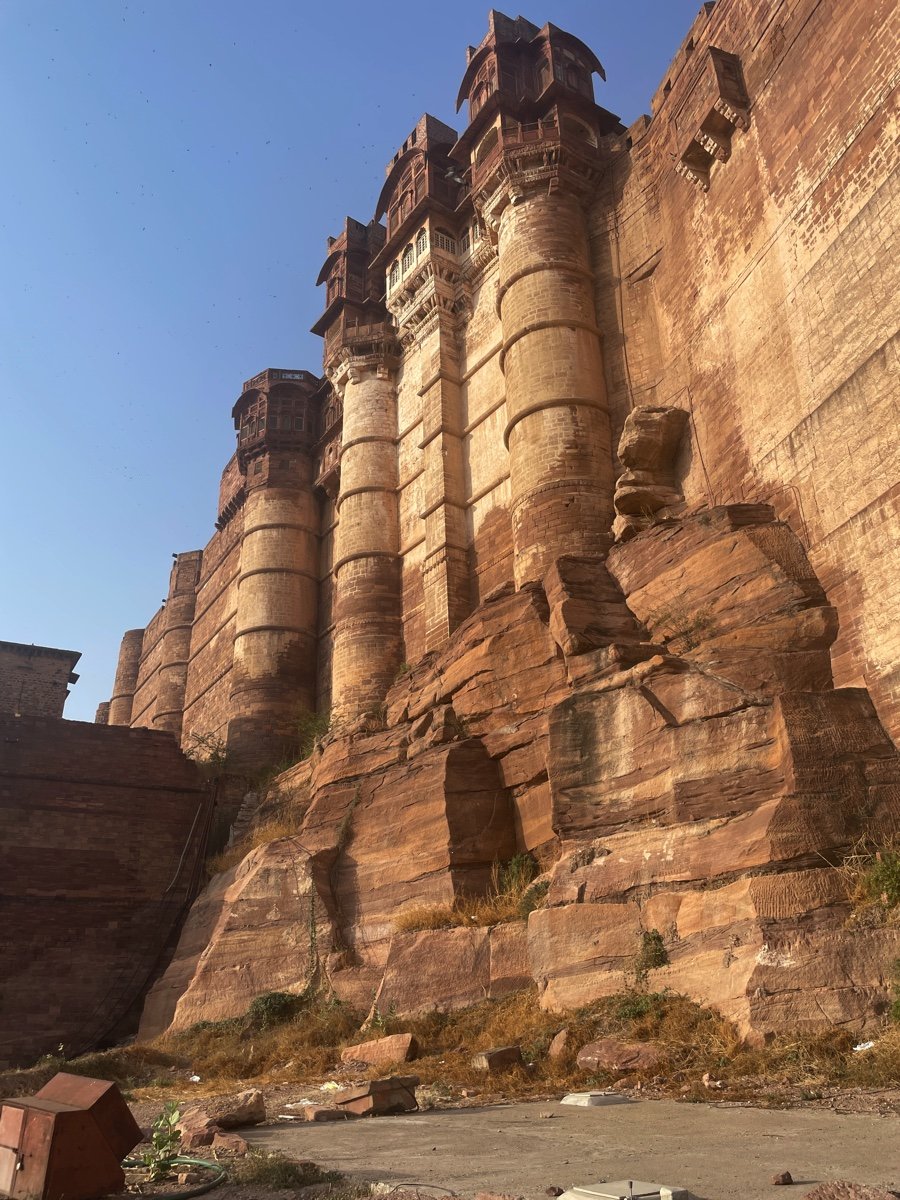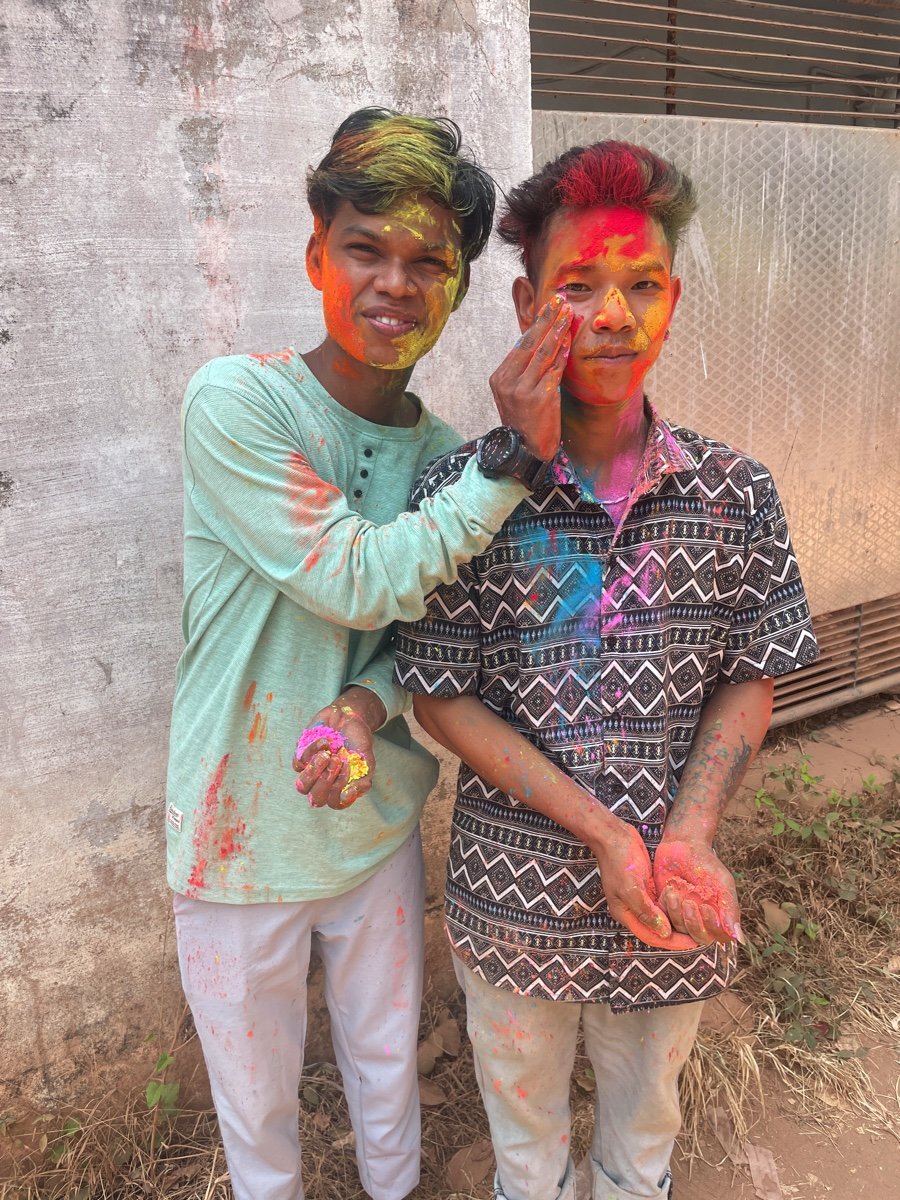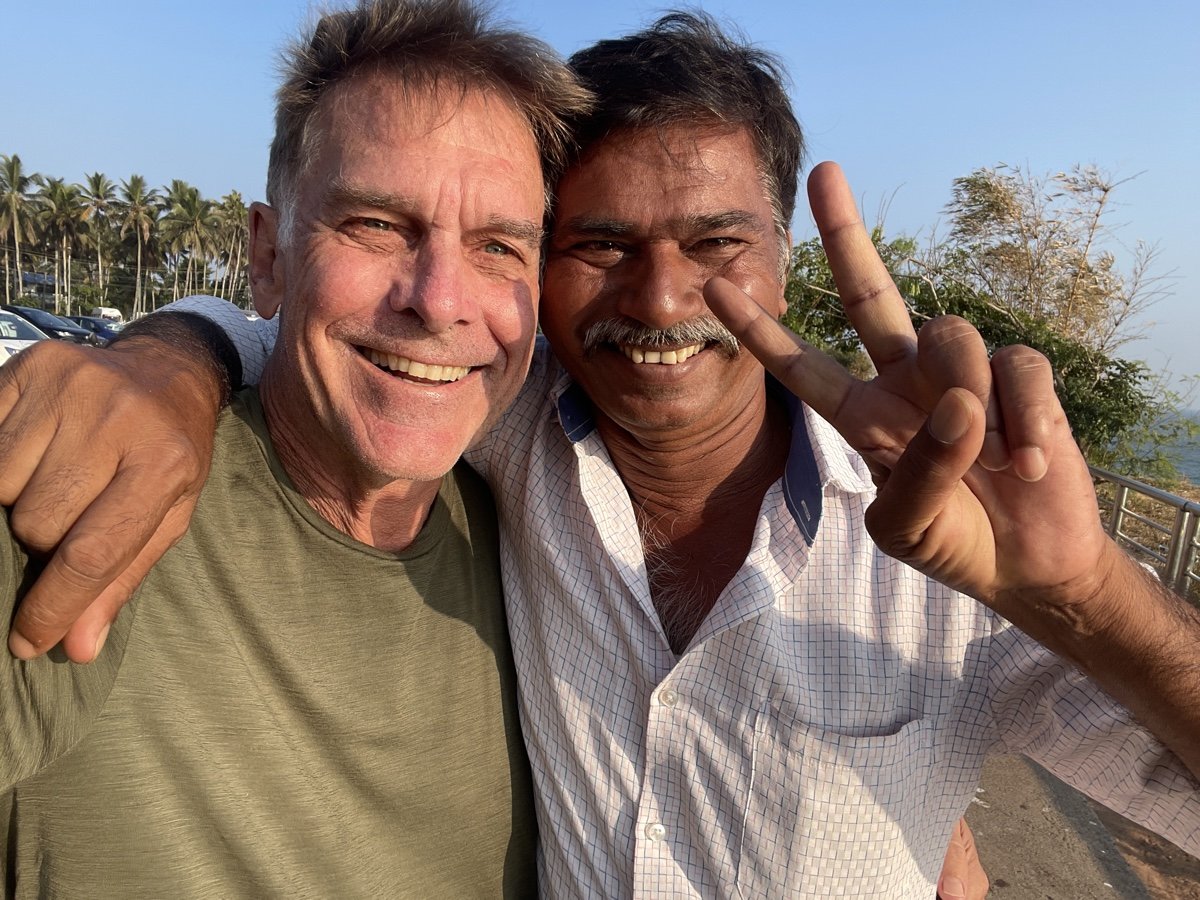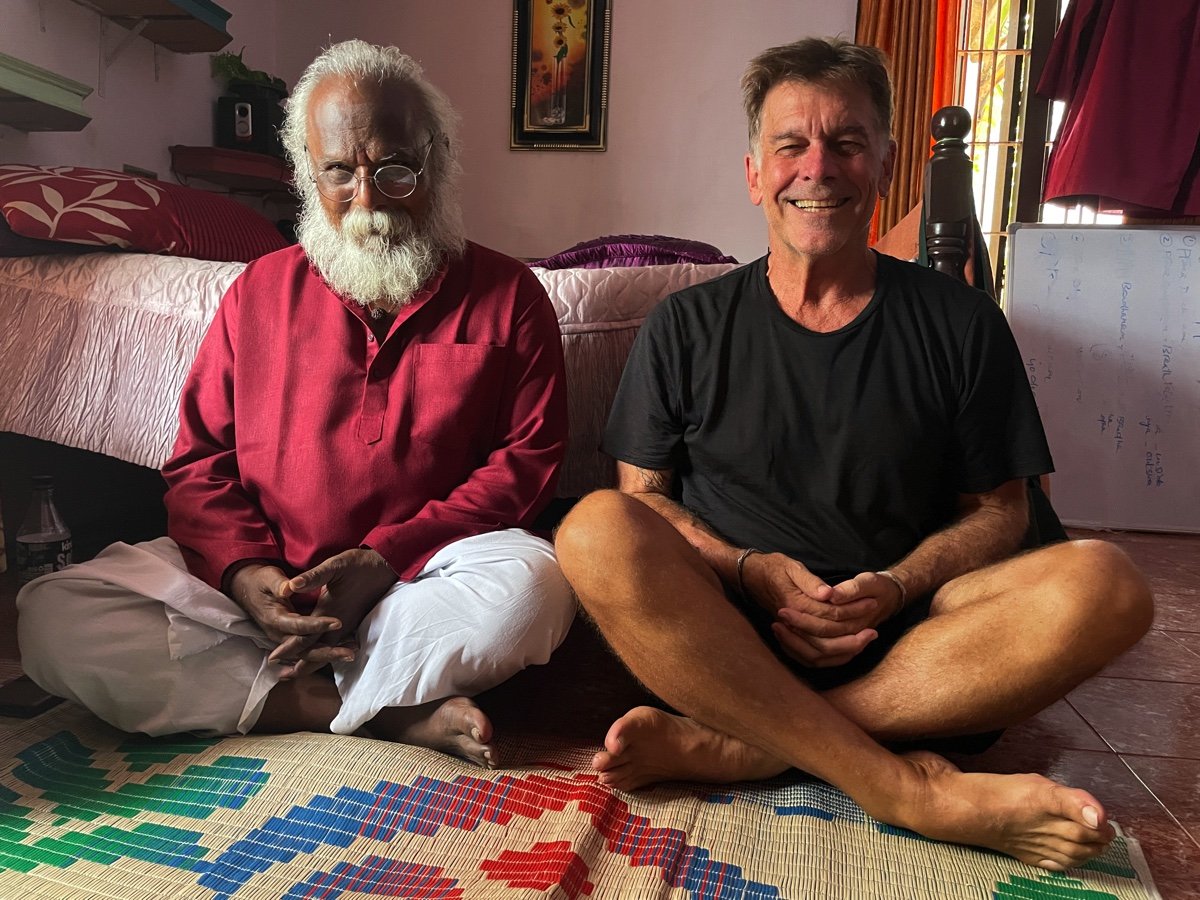The Cliffs of Varkala
It’s probably an understatement that my first month in India was a challenge. I was woefully unprepared for the chaos, noise, and traffic. It didn’t take long before I started feeling ill — my throat burned which required antibiotics to cure.
As difficult as it was, I was fascinated by the alien world that I was inhabiting.
An ancient stepwell. Or Escher painting?
My friend and guide Bruce and I spent the first three weeks touring the deserts of Rajasthan in Northern India -- Jaipur, Pushkar, Jodhpur and Jaisalmer — an area famous for its beautiful huge earthen fortresses nestled strategically on the top of hills overlooking the cities. They showed a hint of all the wars and sieges that were fought over the last few millenniums. I had trouble understanding why and what the attraction was to these barren landscapes. But I took it all in. The heat. The dust and the emptiness.
This adventure was not all doom and gloom. From Jaipur I took a day trip to Agra to see one of the wonders of the world — the Taj Mahal. It’s such an icon, so familiar, in fact I wasn’t that excited to see it because it was almost too familiar. But being so close I was forced to go. But seeing it in person was like discovering it for the first time. It was emotional. Knowing that it was a monument to love. Built by a king in honor of the woman who had captured his heart. Seeing it was like witnessing love for the first time.
My next stop was to the ancient city of Varanasi — the birthplace of Shiva, probably the principal deity of Hinduism. It is a city famous for its funeral pyres perched on the steps (ghats) above and along the holy Ganges river. It is a city that has fascinated me for many years. But Varanasi was a difficult place for me to love (please visit my blog post).
By this time, the chaos of India had worn me down. My sickness lingered. My ears rang. I was tired of the food, the noise and everything in-between.
It was time to move on.
Luckily India is a country with contrasts. There are options. There are places that offer solitude as well as the chaos I had been experiencing.
So Bruce and I talked. “Let’s go someplace different. Someplace calm.” He was firmly on board.
We cut our stay in Varanasi a day short and flew south to the state of Kerala. Then to Varkala — a small bohemian community nestled on the cliffs about the Arabian Sea.
It was here that I found my Indian paradise.
The first thing I noticed after arriving, was that cars and TukTuks rarely honked their horns. What I thought was a nationwide affliction, turns out to be more localized. Kerala was also beautiful, with many trees, especially palms, scattered in all directions. As we drove up the coastline, beaches followed — seemingly going on forever. This was a part of India I didn’t imagine.
Arriving in Varkala I could immediately see that it was special. Along these cliffs overlooking the huge beach, were many tiny restaurants, yoga studios and Ayurvedic clinics.
The area is popular with both locals and tourists. I hardly saw an American, but people from Spain, France, Italy and of course a few Russians escaping their own chaos back home. But you couldn’t ignore the locals, who descended especially on the weekends, flooding the narrow cliff road with their laughter and joy — ice cream in hand. I found a comfortable hotel and knew this was where I wanted to stay. That it would be my home for the next month. I was done traveling around India. I was done exploring. It was time to heal and relax. To get into a routine. To take long walks along the beach. To swim in the warm waters. To explore the local yoga community.
This would be my home. My paradise.
One day on my morning walk I met Mansukh. A unassuming man. Gentle in spirit. He was carrying a bag of paintings that he had made. I was blown away by his talent. We became friends. He even invited me over to his house to meet his wife and son (one of five). We ate a delicious meal of fish and dahl on the floor with our hands.
I ended up buying a few of his paintings — including one he was almost embarrassed to show me. “You like Kama Sutra?” he asked. “Of course.”
It was a masterpiece of erotic art and my favorite of his pieces.
But I was still India — a country where you find experiences you don’t find anywhere else. After chilling out for a few days, I was ready to focus. I love yoga, and there were many, many choices here. But I had another idea.
Over the last eight months, I had discovered breathwork. I had read some books. Watched some videos. I had participated in a few breathwork sessions and became blown away by its power. It spoke to me. Learning to develop a conscious control of my breathing had become my new fascination. I signed up for a deep-dive course. I wasn’t sure where it would be taking me, but I wanted to find out where.
So I thought to myself that maybe in Varkala I could find a real teacher. A teacher of Pranayama — an ancient science that formed the source of all the modern breathwork techniques that I had been studying. I put out the word to a few people I met, and in a few days got a recommendation. His name was Pranaji. By the sound of him, he was my man. I reached out to him and he told me to come by and meet him. 11:30 tomorrow. It was on.
The next morning I showed up to his tiny room tucked away on the top floor of a nearby guest house.
He greeted me warmly. He was almost seventy. A stocky man with white hair and beard. He dressed mostly in flowing orange clothes. He would sit comfortable crossed-legged on the floor. He was everything I imagined a yogi to be. And his laugh was contagious.
He had an ashram in the north of India. He often taught in Rishikesh — the yoga capital of India. But when it got cold in the north, he would head south to Varkala. I just got lucky to be here when he was.
As it turned out, Pranaji would offer to teach anyone who would come. He accepted offerings of about $6/class. Usually there were no more that three of us. Sometimes less, a few times more. Everyday we would sit and he would instruct. His English was good. Because the other students were from different countries, I would find myself his translator.
He was aloof, especially at first. He liked to get to the point. Tell us what to do.
Pranayama was a different form of breathing than I was used to. For instance I had been taught to breathe into my belly. He said no. “Are your lungs in your belly?” he exclaimed. Then why breathe into it? “Fill your lungs — feel your chest expand” he commanded. It made no sense to argue. Pranaji has been a devotee of Pranayama for most of his life. He was taught from his teacher. His knowledge went back generations. It was my turn to shut up and listen. Whatever he asked, I decided to obey. It was here to learn.
My days became a pattern. I would wake up early, go for a long walk along the beach — far beyond the sunbathers, past the fishing boats and onto a deserted part of the sands. I would take off my clothes and run into the warm waters. Rarely were the waves over a few feet in height. Out past the break I would float on my back in Shavasana — relaxing, breathing, in the moment. It was magic.
After, I would return to my room, shower, then walk over to sit with Pranaji. Then lunch, a nap, maybe some writing, dinner and a movie. I found myself in a much needed trance.
Not stopping there, I decided to get a new tattoo. Maybe it would be my award for surviving India. I thought I deserved one. lol. I wanted something spiritual and yet unique. As if I cue, I found Anil. He had had a tattoo shop for many years but was now working out of his house. We met and hit it off immediately. He was very spiritual and open. Over my weeks in Varkala we exchanged ideas and came up with a concept that I was drawn to. As I was finishing my time in Varkala, I settled into his room and I got my badge. (In fact, I was so impressed by him and his work, I decided to get three!). It was a long day, but I was happy.
I would leave Varkala with amazing memories, new learning… and a few more tattoos.
As always, friends fill my adventures


































